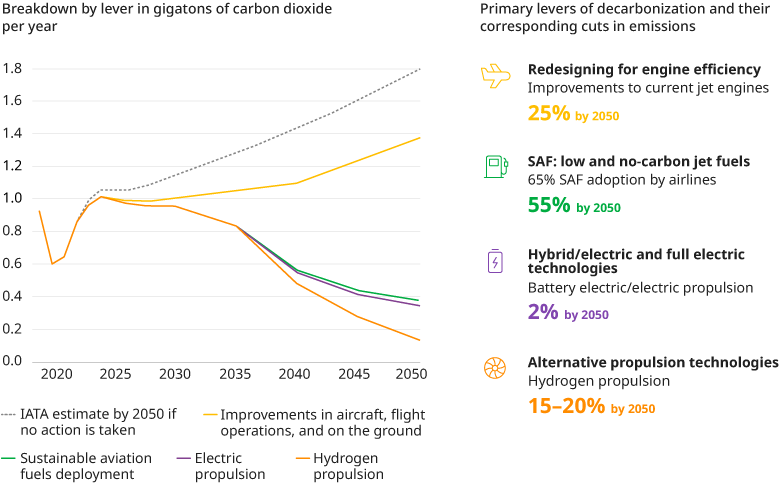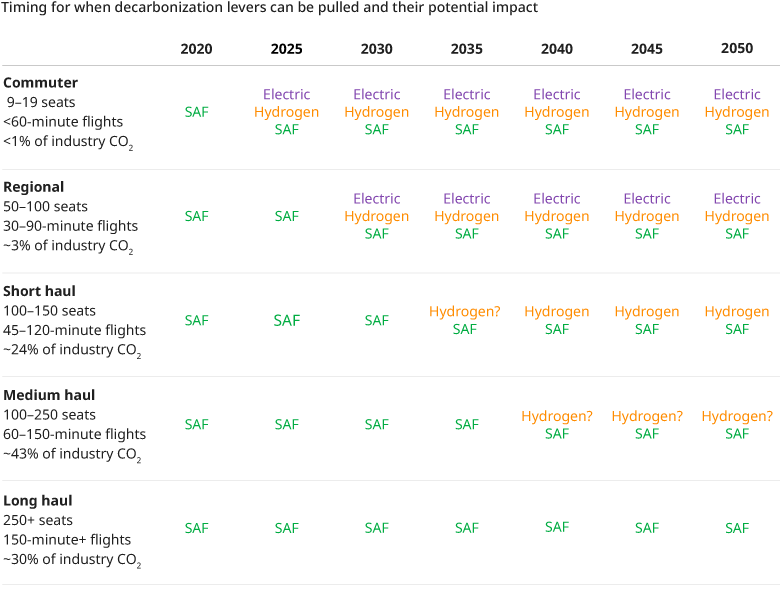A version of this article was originally published in Forbes.
Aviation needs to address its greenhouse gas emissions problem, yet the conversation and investment around decarbonization too often focuses on the wrong technologies and the wrong date. The industry cannot wait until 2050 to get serious about cutting emissions, which is what will happen if it pins too many of its hopes on hydrogen-propelled and battery-powered aircraft. Neither will be approved for use on medium-haul and long-haul commercial airliners much before 2050 — and that delay matters because aircraft with 100 seats or more are responsible for 96% of aviation’s emissions. It will then take decades to replace the thousands of older conventional jets in the global fleet — an action constrained by production capacity as well as economics.

While these non-fossil fuel technologies will eventually play a substantial role in making aviation less carbon-intensive, they will do little until 2040 — the early stage of their incorporation into the global fleet of smaller aircraft and short-haul airliners. By then, assuming business as usual and using a trajectory projected by the International Air Transport Association (IATA) in 2021, aircraft would be responsible for roughly 1.4 gigatons of emissions per year — 40% more than the one gigaton aviation emits today.

The key to cutting emissions over the next two decades is investment in two existing technologies with the potential to shrink aviation’s carbon footprint by as early as 2040 — sustainable aviation fuel (SAF) and conventional kerosene-powered jet engines. By investing in the production capacity for low-carbon SAF and rethinking current jet engines, the industry could cut 80% of its emissions by 2050, moving the needle in the right direction in a substantive way.
Read the original article, here.

